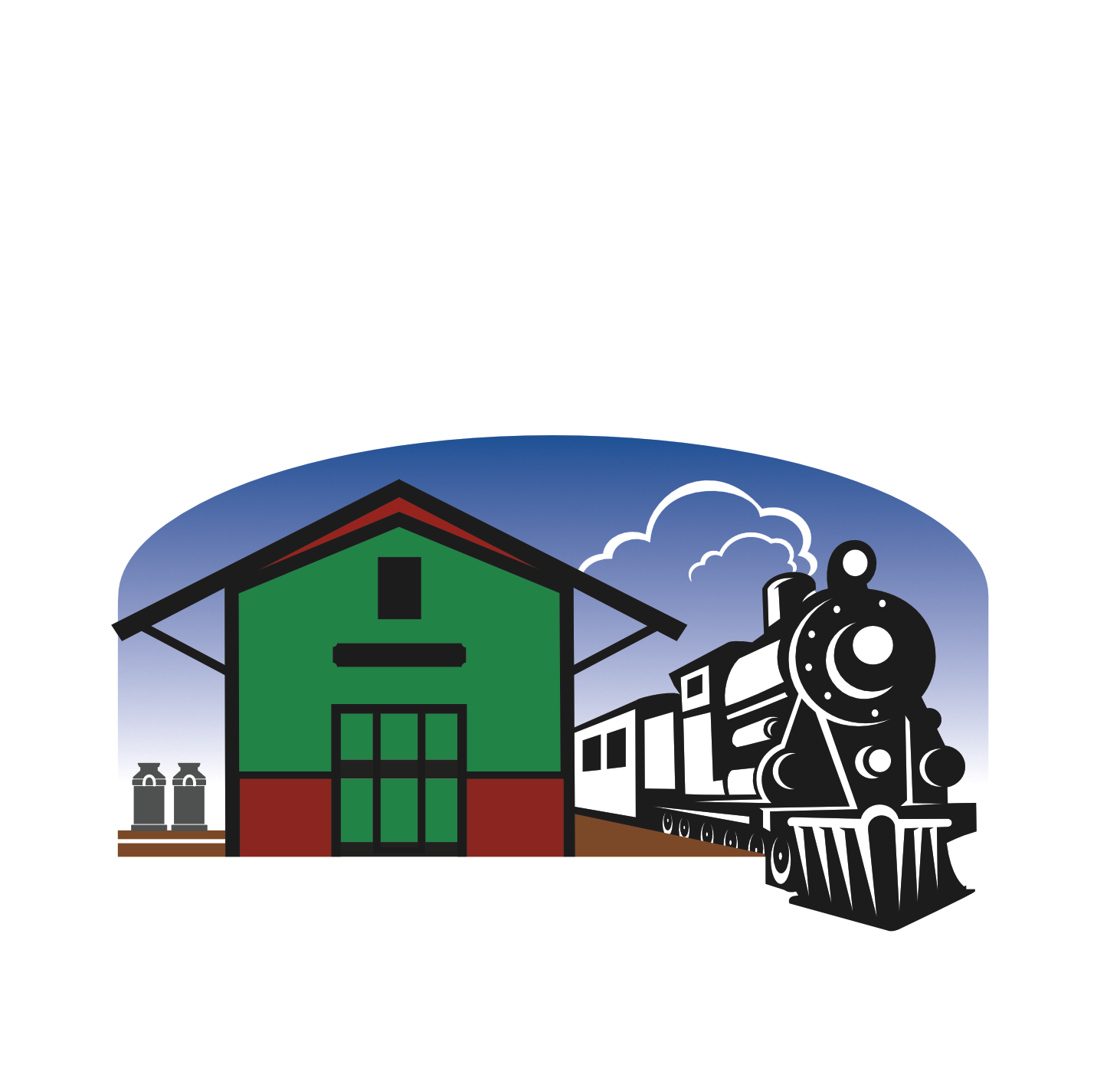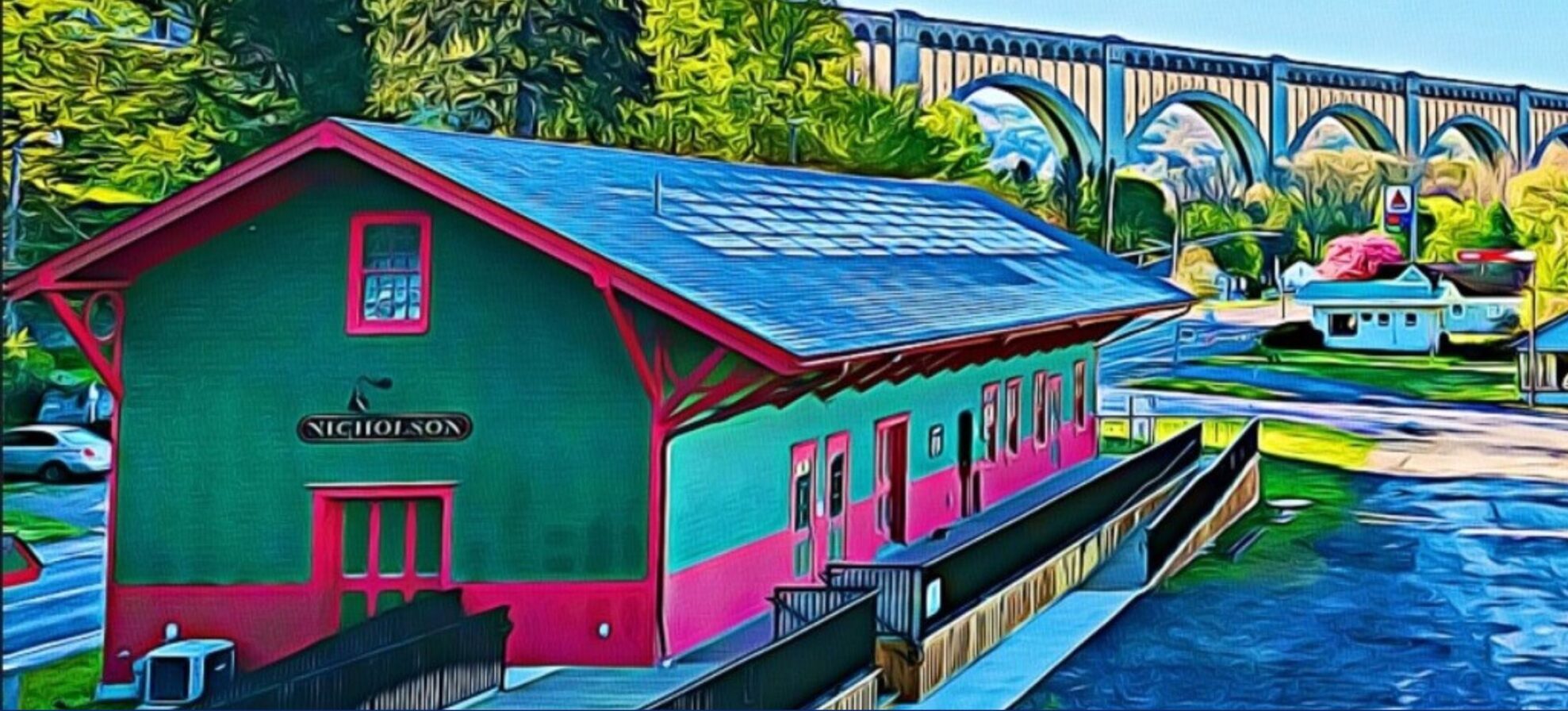The Nicholson Tourism Center at the Historic DL&W Railroad Station is closed for the season, except for Nicholson Sesquicentennial events. More on those at nicholsonsesquicentennial.com. The station will reopen for the 2025 season in May 2025.
The Nicholson Heritage Association held the grand opening ceremony of the former Delaware, Lackawanna and Western Railroad’s (DL&W) Nicholson Station, located right off Route 11, on July 8, 2023 at 11 am. We received a PennDOT Transportation Alternatives Program grant for the rehabilitation of the historic building that covered most costs.
Click to see a video of the progression of the interior/exterior work.
The Association purchased the station in June 2012, with donations from individuals, businesses, and a $25,000 Pepsi Refresh Project grant. In 2014, we held two public meeting to present and discuss the results of the feasibility study, funded mainly in part by a grant from the Endless Mountains Heritage Region with PA Department of Conservation and Natural Resources funds. The designs were possible in part to grants from the Tom E. Dailey Foundation. Reuther+Bowen of Dunmore worked with us on the project, including the designs.
The Nicholson Tourism Center at the Historic DL&W Railroad Station will revitalize the region by attracting tourists to the station, the Tunkhannock Creek Viaduct (also known as the Tunkhannock Viaduct or the Nicholson Bridge to locals), Nicholson, Historic Tunkhannock, Wyoming County, and the Endless Mountains. The station will also attract visitors to the region by linking to the area’s railroading and transportation attractions, including the Martins Creek Viaduct, Viaduct Valley Way Scenic Byway, Starrucca Viaduct, Steamtown National Historic Site, Lackawanna Coal Mine Tour, Anthracite Heritage Museum and Iron Furnaces, Electric City Trolley Museum, D&H Gravity Railroad Depot Museum, and Honesdale: the birthplace of American Railroad. It will also be used for community events.
In addition to the many individual donations that we’ve received, we would also like to thank the following for their generosity of donations to this project: Airline Petroleum, Canadian Pacific, Endless Mountains Heritage Region (two grants for feasibility study and station renovations), Endless Mountains Visitors Bureau and the Wyoming County Room Tax Grant Program, Facet Cycling LLC, First National Bank, First Presbyterian Church (Nicholson, PA), Judd and Dianne Fitze, Geisinger Medical Group, Golf Tournaments – Craig Smith, Golf Tournament – Matthew Lochen, H & D Waste, Hawk Insurance, Lech’s Pharmacy, John Morrison, M&R Trucking, Nicholson Alumni Association, Nicholson Women’s Club, Pepsi (Refresh Project), Peoples Security Bank and Trust, Pump N Pantry, Sam’s Club (#6581), Sherwood Freightliner, Southwestern Energy, Tom E. Dailey Foundation (for designs and engineering costs), Union Grange #152, United Methodist Church Mission Group (Nicholson, PA), United Methodist Women, and the Wyoming County Commissioners and the History Alive program.
Built in 1849 by the Liggett’s Gap Railroad, one of DL&W’s predecessors, the railroad station was the first station built on the Scranton, PA to Great Bend, PA line. Before being used as a freight and passenger station, the building was used to house and feed transient workers. In 1855, the local U.S. Post Office was moved to the station, at which time the name of the settlement was changed from Baconville (sometimes also referred to as Bacontown) to Nicholson. In May 1878, the first telephone service in Northeastern Pennsylvania was opened between the station in Nicholson and the DL&W station in Scranton, about 21 miles south. Nicholson was not the same once the railroad was built. Until the completion of the Clarks Summit-Hallstead Cut-off in 1915, Nicholson was the low point on the rail line and four locomotives were kept here near the station at all times to push trains out of the valley. After the Cut-off was finished in 1915, the railroad station handled freight service only and passenger service was then provided from the new station built on the hill near the recently completed Tunkhannock Creek Viaduct.

